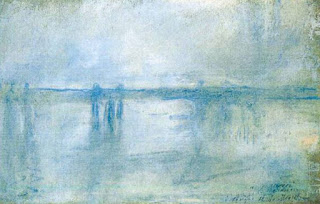Wednesday, October 17, 2012 -  Context Matters,david gill,Fall 2012,Italy,the Journal of Art Crime
Context Matters,david gill,Fall 2012,Italy,the Journal of Art Crime
 No comments
No comments
 Context Matters,david gill,Fall 2012,Italy,the Journal of Art Crime
Context Matters,david gill,Fall 2012,Italy,the Journal of Art Crime
 No comments
No comments
The Journal of Art Crime, Fall 2012: Columnist David Gill on "Fragmented Pots, Attributions and the Role of the Academic" in Context Matters
In the Fall 2012 issue of The Journal of Art Crime, columnist David Gill writes on "Fragmented Pots, Attributions and the Role of the Academic" in Context Matters:
In January 2012 the Italian government announced the return of some 40 archaeological fragments from the Metropolitan Museum of Art in New York. The fragments had been bequeathed by a deceased American collector ("riconducibili alla collezione privata di un cittadino americano, deceduto"). The following day, the Italian journalist Fabio Isman reported, in Il Messaggero, that the anonymous collector was, in fact, Dietrich von Bothmer (Isman 2012). Isman was able to add that some of these 40 fragments were part of objects that had already been returned to Italy from North American collections, or from objects that had been seized by the Carabinieri. Bothmer had himself indicated that he "always gave fragments of mine when they would fit another vase in the collection" (Nørskov 2002:31).
The Italian report specifically added the information that some of the fragments came from the Onesimos cup, returned by the J. Paul Getty Museum and now on display in the Villa Giulia in Rome (Sgubini 1999; Godart and De Caro 2007:78-79, no. 10); see Gill and Chippindale 2006: 312). The first parts of the cup were acquired in 1983 from "the European art market" (Walsh 1984: 246, no. 73, inv. 83.AE.362). At the time, it has been presented to the Museum, accession number 84.AE.8:" its acquisition was reported the following year (Walsh 1985: 169, no. 20, inv. 84.AE.80; see Williams 1991). Further fragments, from the "European art market", were added in 1985 (Walsh 1986: 191, no. 47, inv. 85.AE.385.1-2). It is significant that Dyfri Williams, who published the "Getty" cup, noted that he was shown photographs of "a rim fragment, made up of three pieces" in November 1990. He does not specify who owned the pieces. Subsequent research has shown that the fragments were derived from Galerie Nefer (owned by Frida Tchacos-Nussberger), and the Hydra Gallery (Gill and Chippindale 2006: 312).
David Gill teaches at University Campus Suffolk, Ipswich, England. He is a former Rome Scholar at the British School at Rome and was a member of the Department of Antiquities at the Fitzwilliam Museum, University of Cambridge. He has published widely on archaeological ethics with Christopher Chippindale. He has recently completed a history of British archaeological work in Greece prior to the First World War.
You may read Dr. Gill's Context Matters by subscribing to The Journal of Art Crime through the ARCA website.
You may read Dr. Gill's Context Matters by subscribing to The Journal of Art Crime through the ARCA website.

















